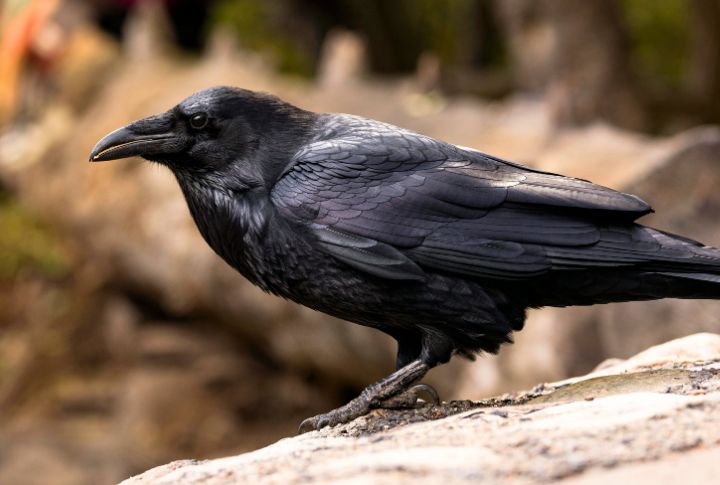
Most birds simply follow their instincts and strive to survive. Ravens? They’re using tools, remembering human faces years later, and maybe even talking about you behind your back. Scientists have spent decades studying the intelligence of ravens, and these birds continue to surprise everyone. Here are 10 fascinating truths we’ve discovered about these remarkable creatures.
Display Signs Of Emotional Sensitivity And Empathy
Ravens don’t just observe each other—they actually absorb one another’s emotions. When one bird is distressed, nearby ravens can mirror that negative state, a phenomenon known as emotional contagion. Young ravens even console upset companions and adopt the playful moods of their peers.
Engage In Curious Interactions With Ants
Ravens are known for “anting,” a behavior where they let ants crawl across their feathers. Scientists debate its purpose, but many believe it helps with cleaning, soothing skin, or controlling parasites, making this curious ritual a notable raven fact.
They Can Mimic Human Speech
Because ravens stay curious about the sounds around them, they usually try copying tones that resemble human words. Without much effort, they also pick up animal calls and everyday noises. When they feel relaxed, they may repeat a familiar sound just to get people looking.
Thrive In Diverse Habitats And Climates
Ravens show remarkable survival instincts and adapt to environments ranging from Arctic ice to desert heat. Their presence endures wherever food and shelter remain steady, proving these resilient birds can flourish even when conditions shift quickly between extremes.
Once Feared As Omens In European Folklore

Their dark plumage and haunting calls led people to see them as messengers of death or supernatural warnings. Medieval stories frequently portrayed them as ominous figures, although some legends also attributed to them roles as wise guides or prophetic creatures capable of sensing future events.
Featured Across Global Mythologies And Legends
While most birds are overlooked in ancient mythology, ravens commanded attention everywhere. Indigenous American tales featured them as cosmic tricksters and world-builders. Meanwhile, Celtic cultures associated them with foresight, probably because watching a raven outsmart other animals feels borderline supernatural.
Cache Food For Future Use
Ravens often hide surplus food in secret spots, returning later when resources run low. They remember dozens of hiding places and even watch rivals closely, sometimes relocating their caches to outsmart thieves and ensure survival.
Known For Their Playful Behavior
Sliding and stick-tossing seem to be a raven’s idea of a good time. They even provoke other animals just to see reactions. Their playful stunts aren’t just for laughs—they help ravens think on their feet and figure out clever ways to handle whatever comes next.
Communicate Using Gesture-Like Signals
Watch a raven closely, and it might lift its wing or tap an object to get a friend’s attention. Each gesture carries meaning, which makes it feel as though these clever birds are quietly negotiating life with their own private code.
Territorial Nature
Ravens form strong pair bonds and defend the territories surrounding their nests, using aerial maneuvers and displays to deter rivals. Although territoriality isn’t unusual among birds, ravens make it striking by combining intelligence and dramatic flight chases.

